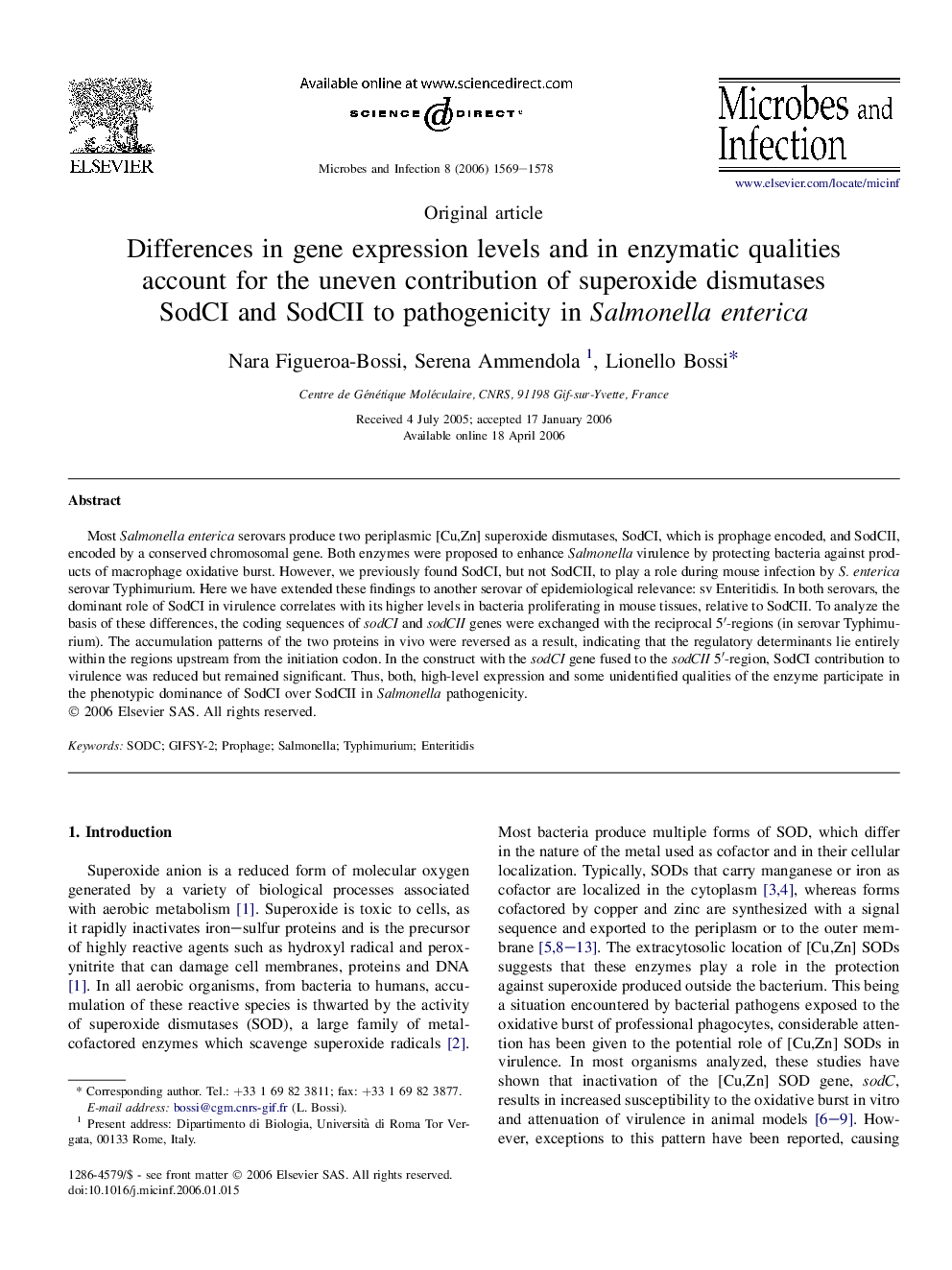| Article ID | Journal | Published Year | Pages | File Type |
|---|---|---|---|---|
| 3416047 | Microbes and Infection | 2006 | 10 Pages |
Most Salmonella enterica serovars produce two periplasmic [Cu,Zn] superoxide dismutases, SodCI, which is prophage encoded, and SodCII, encoded by a conserved chromosomal gene. Both enzymes were proposed to enhance Salmonella virulence by protecting bacteria against products of macrophage oxidative burst. However, we previously found SodCI, but not SodCII, to play a role during mouse infection by S. enterica serovar Typhimurium. Here we have extended these findings to another serovar of epidemiological relevance: sv Enteritidis. In both serovars, the dominant role of SodCI in virulence correlates with its higher levels in bacteria proliferating in mouse tissues, relative to SodCII. To analyze the basis of these differences, the coding sequences of sodCI and sodCII genes were exchanged with the reciprocal 5′-regions (in serovar Typhimurium). The accumulation patterns of the two proteins in vivo were reversed as a result, indicating that the regulatory determinants lie entirely within the regions upstream from the initiation codon. In the construct with the sodCI gene fused to the sodCII 5′-region, SodCI contribution to virulence was reduced but remained significant. Thus, both, high-level expression and some unidentified qualities of the enzyme participate in the phenotypic dominance of SodCI over SodCII in Salmonella pathogenicity.
